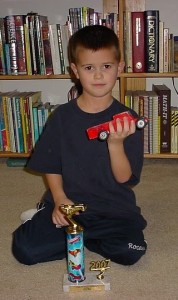 Goal Setting
Goal Setting
…is an important part of managing our lives. Knowing what our priorities are, setting objectives and working to make them reality, is a vital skill in our busy world. Parents would do well to begin teaching their children, as they grow, to set achievable goals for themselves and become proficient at breaking them down into steps that can be accomplished a little at a time. The sooner we learn to set goals, and develop a process for achieving them, the better off we will be as life gets more complicated.
Setting goals with students begins before they ever enter the classroom. Depending on the age of the child, there are many ways that children can practice setting and achieving goals.
- Toddlers can learn to climb a set of stairs and celebrate when they reach the top. They can learn to build a tower of blocks and create a finished product.
- Preschoolers can work on saying the alphabet or counting to 10, with small rewards as they learn each letter or number. They can learn to pick flowers or harvest vegetables in the garden, both of which have a very easily achieved goal. A lovely bouquet for the table, or a yummy snack!
- If your school-age child is new to goal setting, start with a very short term goal. Say, finishing homework before dinner. Give the child something to work toward, like a story or game with mom and dad after dinner, and make sure that you follow through.
- After the child is able to accomplish the short term goal with ease, set another goal, that is a little more challenging. For example, finishing homework before dinner every night for a week. Achieving the goal could be rewarded with a special Saturday “date” with Mom or Dad.
- An allowance is an excellent way to help kids learn to set goals, as it is its own reward. Giving them the opportunity to earn a small amount of money for doing their “job” well, whether it is chores, schoolwork, or a combination of the two is a good way to teach them a good work ethic, and to set and achieve financial goals. We are rewarded in the workplace with a paycheck, and then it is up to us to set the goals that we want to achieve with our money. Let kids start practicing a financial system and help them to learn about saving, budgeting, and earning more by doing extra work.
- Middle and High School students, can set longer term goals. Gradually helping a child work harder for longer, with a loftier goal, helps them develop patience and perseverance. Once a child is in middle school, there are any number of areas where they can practice these skills.
- Use group activities such as scouting, sports especially martial arts and swimming, or 4-H. All of these types of activities use goal setting as a way of motivating young people toward accomplishment. These programs have long-tested methods and are a good way for the whole family to learn to work hard to reach a worthy goal.
- Or focus on learning new skills such as scrapbooking, sewing, wood working, gardening or playing an instrument. These activities all require a longer scope and more patience. Helping them create a vision, plan a project, break it down into tasks, and then celebrating the finished project is rewarding for all of you!
School related accomplishment follows as a child learns that anything they attempt is easier if it is broken down into smaller tasks. Be sure you are available to guide your child when they are unsure of how to break down the tasks.
Follow these steps to help your child learn how to set goals:
- Identify what it is the child wishes to accomplish: “I want to learn my times tables by the end of third grade.”
- Identify the steps that need to be taken to accomplish this goal: “In order to learn my times tables I will need to be able to correctly name my multiplication facts from 1-12. I will practice 1 set of facts per week.”
- Set up a system to help your child complete the task. This is when charts come in handy. Create a weekly calendar to put a sticker on the chart for each day that your child practices for 5 minutes (or however long you determine).
- Identify rewards that are commensurate with the task. For instance, a smile or ‘Well done’ is often enough to recognize that steps are being taken towards a larger goal. A sticker on a chart. An ice cream for a week’s worth of completed tasks. A movie night or something special to your family for longer projects.
Keep in mind that timelines for children vary with age and development. Preschool children need immediate rewards as their future is ‘now’. School age children work with a 6-24 hour range of future planning. Teenagers can plan 2-5 days into the future and young adults 1-3 weeks. This means you need to help them break tasks down into steps that fit in their time horizon awareness. (adapted from research compiled by Russell Barkley)
Be there to share the journey and the joy at the end of it! A child who learns good task-management skills will be able to take those skills into life and into the workplace. Goal-setting is a life-skill that can be taught to a toddler, a school age child, or a teen. It is never too early, and never too late, to start!














No comments yet.